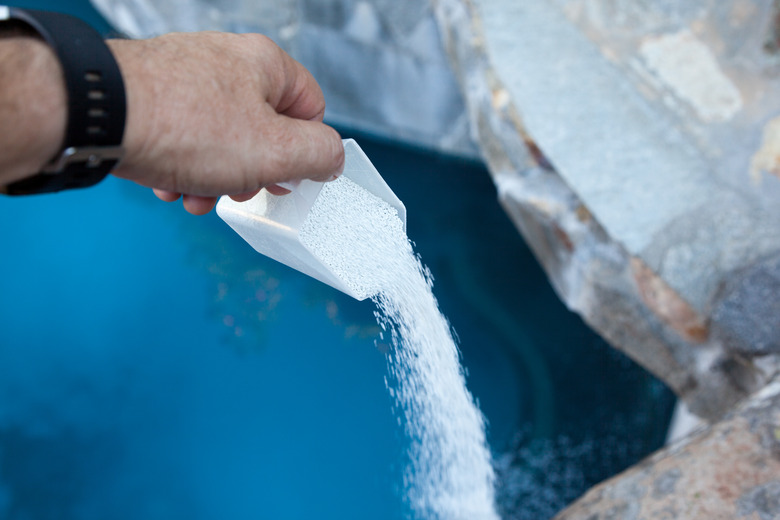How To Calculate Chlorine Dose
Water treatment plants convert fresh water into potable drinking water, removing contaminants and killing bacteria that are harmful when ingested. A common method of cleaning the water being processed is with the use of chlorine. When using chlorine in the water it is important to carefully monitor the amount used — to ensure enough chlorine is infused to kill harmful bacteria — while not over-chlorinating the water and making it dangerous. This is performed by applying a basic formula to the treatment facility's water flow data.
Determining Pounds Per Day
Step 1
Check the flow rate of the facility in million gallons per day (MGD). For example, a facility that processes 1,500,000 gallons of water per day, the MGD glow is 1.5.
Step 2
Multiply the MGD by 8.34 lbs per gallon. In the example, the result would be 12.51.
Step 3
Multiply the result by the desired concentration of chlorine in milligrams per liter. For the example, a desired concentration of 4 milligrams per liter would be multiplied by 12.51 to yield a result of 50 pounds of chlorine per day.
Finding the Concentration of a Solution
Step 1
Check the flow rate of the facility in million gallons per day (MGD). For example, a facility that processes 3,000,000 gallons of water per day, the MGD glow is 3.
Step 2
Determine the amount of chlorine being added to the water each day. For the example, assume the facility is using 100 pounds of chlorine per day.
Step 3
Divide the daily chlorine input by the MGD flow of the facility. In the example, the result would yield 33.33.
Step 4
Divide the result by 8.34 pounds per gallon to find the chlorine concentration. In the example, the concentration is 4 milligrams per liter.
Cite This Article
MLA
Preston, Robert. "How To Calculate Chlorine Dose" sciencing.com, https://www.sciencing.com/how-8524473-calculate-chlorine-dose/. 1 June 2011.
APA
Preston, Robert. (2011, June 1). How To Calculate Chlorine Dose. sciencing.com. Retrieved from https://www.sciencing.com/how-8524473-calculate-chlorine-dose/
Chicago
Preston, Robert. How To Calculate Chlorine Dose last modified March 24, 2022. https://www.sciencing.com/how-8524473-calculate-chlorine-dose/
